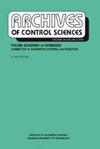基于 MPC 反转向的最佳混合四旋翼飞行器控制技术
IF 1.2
4区 计算机科学
Q4 AUTOMATION & CONTROL SYSTEMS
引用次数: 0
摘要
四旋翼无人飞行器是一个多变量、耦合、不稳定和欠驱动的系统,具有固有的非线性。它在各种应用中越来越受欢迎,也是众多研究的主题。然而,对四旋翼飞行器进行建模和控制使其遵循轨迹是一个具有挑战性的问题,目前还没有唯一的解决方案。本研究提出了一种最佳混合四旋翼飞行器控制方法,该方法采用基于 MPC 的反步进控制,用于跟踪参考轨迹。外环控制器(反步控制器)控制四旋翼飞行器的位置,而内环控制器(模型预测控制)控制其姿态。利用牛顿-欧拉方法对四旋翼飞行器的平移和旋转动力学进行分析。之后,创建了反步进控制器(BC),这是一种基于李亚普诺夫理论的循环控制方法,利用遗传算法(GA)自动选择控制器参数。为了在四旋翼飞行器动力学存在非线性的情况下应用线性控制技术,开发了线性参数可变(LPV)模型预测控制(MPC)结构。仿真验证了所提出的基于混合 MPC 的四旋翼飞行器最佳反步进控制器在遵循给定参考轨迹时的动态性能。仿真结果表明,在轨迹跟踪中使用指令控制输入时,所提出的控制算法可对指定的位置参考进行适当的跟踪,��和��位置的最大适当跟踪误差为 0.1 m,��位置的最大适当跟踪误差为 0.15 m。本文章由计算机程序翻译,如有差异,请以英文原文为准。
An optimal hybrid quadcopter control technique with MPC-based backstepping
Quadcopter unmanned aerial vehicle is a multivariable, coupled, unstable, and underactuated system with inherent nonlinearity. It is gaining popularity in various applications and has been the subject of numerous research studies. However, modelling and controlling a quadcopter to follow a trajectory is a challenging issue for which there is no unique solution. This study proposes an optimal hybrid quadcopter control with MPC-based backstepping control for following a reference trajectory. The outer-loop controller (backstepping controller) regulates the quadcopter’s position, whereas the inner-loop controller (Model Predictive Control) regulates its attitude. The translational and rotational dynamics of the quadcopter are analyzed utilizing the Newton-Euler method. After that, the backstepping controller (BC) is created, which is a recurrent control method according to Lyapunov’s theory that utilizes a genetic algorithm (GA) to choose the controller parameters automatically. In order to apply a linear control technique in the presence of nonlinearities in the quadcopter dynamics, Linear Parameter Varying (LPV) Model Predictive Control (MPC) structure is developed. Simulation validated the dynamic performance of the proposed optimal hybrid MPC-based backstepping controller of the quadcopter in following a given reference trajectory. The simulations demonstrate the fact that using a command control input in trajectory tracking, the proposed control algorithm offers suitable tracking over the assigned position references with maximum appropriate tracking errors of 0.1 m for the �� and �� positions and 0.15 m for the �� position.
求助全文
通过发布文献求助,成功后即可免费获取论文全文。
去求助
来源期刊

Archives of Control Sciences
Mathematics-Modeling and Simulation
CiteScore
2.40
自引率
33.30%
发文量
0
审稿时长
14 weeks
期刊介绍:
Archives of Control Sciences welcomes for consideration papers on topics of significance in broadly understood control science and related areas, including: basic control theory, optimal control, optimization methods, control of complex systems, mathematical modeling of dynamic and control systems, expert and decision support systems and diverse methods of knowledge modelling and representing uncertainty (by stochastic, set-valued, fuzzy or rough set methods, etc.), robotics and flexible manufacturing systems. Related areas that are covered include information technology, parallel and distributed computations, neural networks and mathematical biomedicine, mathematical economics, applied game theory, financial engineering, business informatics and other similar fields.
 求助内容:
求助内容: 应助结果提醒方式:
应助结果提醒方式:


